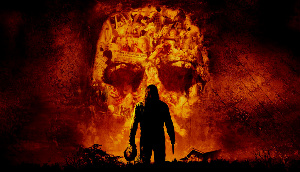
Director: Rob Zombie
Writer: Rob Zombie
Starring: Malcolm McDowell, Sheri Moon Zombie, Tyler Mane, Danielle Harris
Rating: R (USA), 18 (UK), R (Australia)
On November 11 2005, Moustapha Akkad was killed alongside his daughter, Rima Akkad Monla, when an Al-Qaeda terrorist attack on the Grand Hyatt in Amman, Jordan, resulted in the lobby of the hotel collapsing. Having pioneered the series through twenty-seven years of hits and misses, it was a devastating blow for the Halloween franchise. With his strongest ally gone, the future looked bleak for Michael Myers. But the surprise success of The Texas Chainsaw Massacre in 2003 ushered in a new cash cow, the remake, and soon every studio in Hollywood jumped on the bandwagon. The slasher film suffered many casualties – When a Stranger Calls, Black Christmas – and soon rumours began to circulate online that Dimension were planning to try something similar with Halloween. The series had tried almost everything to survive, and through three decades and seven inferior sequels, Michael Myers had become one of the most recognisable faces in horror cinema. But the character had suffered. He had been the victim of mediocre scripts and studio interference, and since the slasher craze of the eighties had been facing competition from the likes Jason Voorhees and Freddy Krueger. It was time to give the story a makeover.
Whilst The Curse of Michael Myers had attempted to create some kind of backstory as to why he had grown up evil, the rest of the series had tried to keep him elusive, as familiarity can often dilute the fear. Aside from the opening sequence of John Carpenter’s original, which had showed five-year old Michael slaughtering his sister, his face had been obscured behind the infamous white mask, leaving the true terror to the audience’s imagination. But, as with any tired franchise, there comes a point where the filmmakers run out of ideas and are forced to return back to the beginning and capture that winning formula once again. Ironically, these new series of films kickstarted by a remake may start off strong (with the ‘re-imagining’ outgrossing most of its predecessors), but its winning streak will often only last one or two films, such as with The Texas Chainsaw Massacre. But the backlash levelled at Halloween Resurrection had prompted the studio, under the guidance of Moustapha’s son, Malek Akkad (who had been involved in the franchise since Dimension‘s inception), to rethink their approach and bring back Michael as a pure force of evil, something which would make the character scary again.
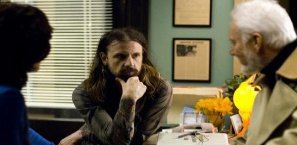
After rumours of a new movie to be directed by cult filmmaker Dante Tomaselli were dispelled, news began to circulate in the spring of 2006 about a possible sequel or remake, to be helmed by rock star Rob Zombie, whose previous two flicks, House of 1000 Corpses and The Devil’s Rejects, had slowly gained loyal followings. After Fangoria‘s website fuelled the fire even further, Zombie denied the claims of his MySpace page, although the following day Dimension released an official statement announcing his involvement in the project. Out of respect for the franchise’s creator, Zombie contacted John Carpenter, whom he had been friends with since White Zombie‘s track, The One, was used in Escape from LA in 1996, to inform him of the remake before the news was made public. Following on from his earlier films, Zombie had decided not only to set the story in the seventies but also write, direct and supervise the soundtrack. The statement also revealed that the movie would act as both a prequel and a sequel, revealing the origins of the character before developing into a slasher film. An October 2007 theatrical release date was also given.
Over the years, the character of Michael Myers had become too familiar through comics, t-shirts and other merchandise, and Zombie intended on taking him back to basics. He also wanted to explore Michael’s childhood, which was barely touched upon in the previous films, although his trademark mix of violence and trailer trash sleaze would guarantee that his take on Halloween would be far different in style to Carpenter’s. He also wanted Dr. Loomis, his long-suffering psychiatrist, to take on a more significant role in the attempted rehabilitation of Michael, as in the original series he had been more concerned with keeping the evil at bay as opposed to treating the young boy. This would mark the first time that Michael would actually speak, being represented as a troubled but three-dimensional young boy. Instead of drawing influence from his contemporaries, Zombie had turned to other genres to inspire his intended look for the movie, such as various Academy Award-winning dramas like 21 Grams and The Constant Gardener. Pre-production commenced in June 2006, with resident composer Tyler Bates and the director’s wife, Sheri Moon Zombie, coming on board, with the latter portraying the antagonist’s mother. The following November saw Dread Central stating that Indian actor Erick Avari, who had previously appeared in the likes of Flight of the Living Dead: Outbreak on a Plane and episodes of the television show Heroes, had been cast in the role of Loomis, though these claims were soon rebuffed.
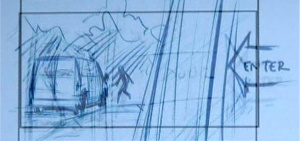
Things began moving along much quicker by December, with the casting process, supervised by Monika Mikkelsen (who had also helped cast The Devil’s Rejects), resulting in the roles of Dr. Loomis and Michael Myers, both young and old, being filled by Malcolm McDowall, Daeg Faerch and Tyler Mane, respectively. The remainder of the cast would be hired the following month, including genre legend Brad Dourif, Howling II‘s Sybil Danning and Scout Taylor-Compton, who would turn eighteen in February. One of the most exciting elements of the casting as far as fans were concerned was the inclusion of Danielle Harris (Jamie Lloyd from Halloween 4 and 5), though this time she would be portraying Annie Brackett, previously played by Nancy Loomis. Principal photography commenced on 29 January in the same neighbourhood as Carpenter’s thirty years earlier, with Smith’s Grove Sanitarium located in North Hills, Los Angeles, whilst the Myers house would be shot at two separate locations, the downstairs scenes on Harvard Blvd whilst the upstairs set was based in South Pasadena. The first day’s shooting consisted of one of the earlier scenes in the movie when Michael is taunted at the breakfast table by his mother’s alcoholic boyfriend, Ronnie (played by The Devil’s Rejects‘ William Forsythe). As with many of the previous films, a springtime shoot meant that the filmmakers were forced to import leaves to give the impression of the story being set in the fall.
By the end of February, the first image of Mane in full Michael Myers costume was published, promptly filling forums across the internet with fanboy comments and speculation. On March 17 another image was released, of Faerch wearing young Michael’s clown mask, designed by special effects artist Wayne Toth. For the murder sequence where Michael slaughters his sister, Judith (Hanna R. Hall), her boyfriend (Adam Weisman) and Forsythe, a stunt double was used as Zombie felt that it was inappropriate to have a child beating people with baseball bats, stabbing them to death and, in one shot, stroking his sister’s leg. Unable to find a male small enough with long blonde hair to fill in for the shots, a female was used, with Faerch not even present on set during some of the shooting as he was away at college. The scene in which he beats a school bully to death (Spy Kids star Daryl Sabara) was shot at Griffith Park in Los Feliz, Los Angeles. On May 8, just two weeks after filming at that location, a huge fire spread through the park, resulting in the destruction of 817 acres and various wildlife.
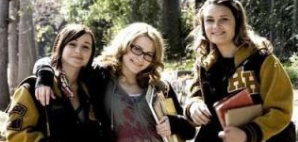
For the cinematography, once again performed by regular collaborator Phil Parmet, Zombie wanted each act of the movie to be shot in a different way. For the first story, which would focus on Michael’s upbringing and his brief murder spree, most of the scenes would be shot hand-held to allow for the close intimacy, whilst the scenes in the sanitarium would all be still. Once the film cuts back to Haddonfield the screen is full of colours, until Michael makes his return. In one scene, Michael’s mother is performing a strip routine to the melancholy Nazareth classic Love Hurts, which intercuts with shots of her son. For this sequence, Zombie had originally intended to use the Alice Cooper track Only Women Bleed, but felt that this was only relevant to the mother and wanted something that would also represent the torment inside Michael. As with many modern genre films, post production involved colour manipulation, which would drain the look of the film in much the same way that David Fincher had employed with Fight Club.
Just four days before Halloween‘s US release, a workprint bootleg made its way onto the internet, which the studio feared would hurt its box office performance like Eli Roth’s had suffered earlier in the year. For the theatrical cut, various graphic sexual scenes were trimmed and Zombie removed the elaborate opening sequence. The movie was officially released on August 31 2007, the same day as Death Sentence, the sophomore effort from Saw director James Wan. On its opening weekend, Halloween made an impressive $30.5m, more than double its budget, and by the end of September it had earned $56,201,164, making it the most successful Halloween movie of all time, although in adjusted figures the original film still has the most impressive budget-to-gross turnaround. Fans were split on the final result. Some praised his revival of the character and detailed backstory, whilst others criticised its sleaze and Zombie’s decision to recreate various scenes and lines of dialogue from Carpenter’s film during the final act. But overall, Halloween had succeeded where many of the sequels had failed. It had brought Michael Myers back into the mainstream and this time he was more popular than ever.
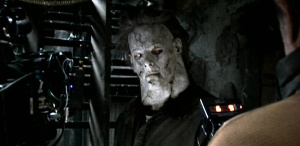

2 Responses to HE CAME HOME pt.10 – Halloween (2007)